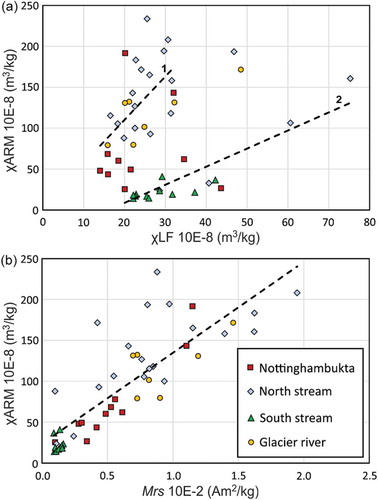Figures & data
Figure 1. Lithostratigraphy of the Werenskioldbreen basin, modified after Stachnik et al. (Citation2016). All subdivided units belong to the Heckla Hoek Succession.
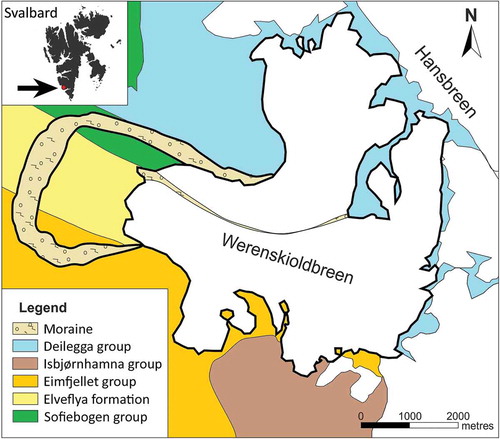
Table 1. Grouping of investigated samples into sets.
Figure 2. Location map of analysed samples (based on Norwegian Polar Institute maps at http://toposvalbard.npolar.no/). The glacier front was drawn based on the Landsat 8 satellite image from 8 September 2015 (available from the US Geological Survey at https://earthexplorer.usgs.gov/).
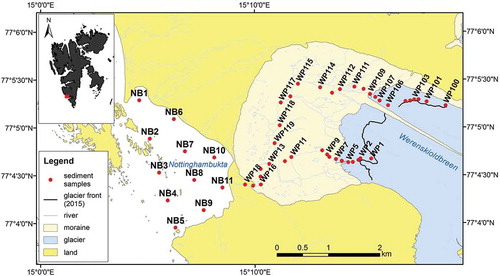
Figure 3. Distribution of χLF in the investigated area (based on Norwegian Polar Institute maps at http://toposvalbard.npolar.no/).
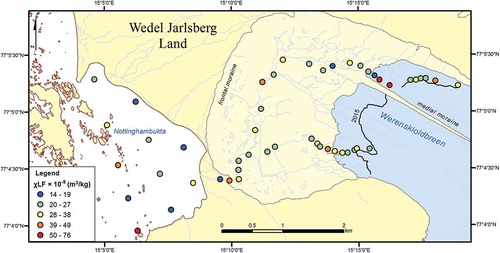
Figure 4. Distribution of χARM in the investigated area (based on Norwegian Polar Institute maps at http://toposvalbard.npolar.no/).
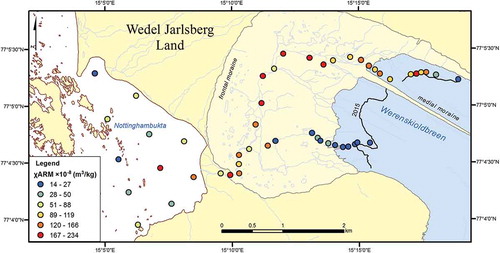
Figure 5. κ(T) conducted in the air with heating curves (red) and cooling curves (blue). (a, b) Typical diagrams for most samples of Nottinghambukta, characteristic also of the north stream and the glacier river. (c, d) Partial κ(T) analysis for the NB11 sample. (e, f) Typical diagrams for the south stream, characteristic also of the outside part of the bay. (g, h) Examples of untypical diagrams from the south stream. In the graphs in the right column (b, d, f, h) the heating curves are shown with enlarged scales on the y axes, providing more detail.
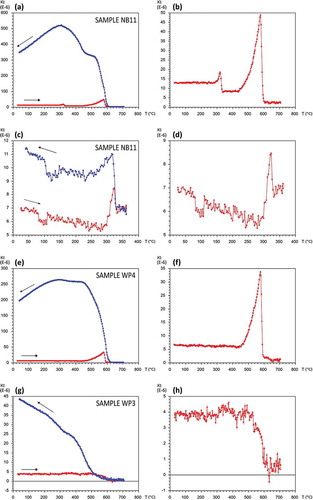
Figure 6. Example of hysteresis loops for a sample (a, b) with and (c, d) without pyrrhotite. The graphs on the right (b, d) display loops after paramagnetic correction.
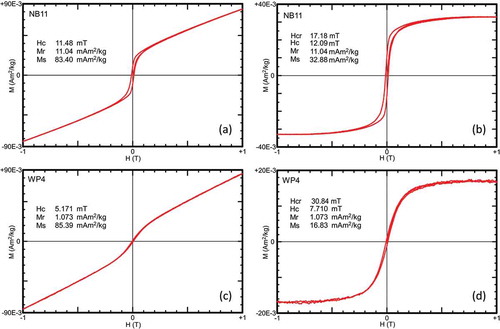
Figure 7. Day-Dunlop graph showing the hysteresis magnetization ratio (Mrs/Ms) versus coercivity ratio (Hcr/Hc) (Day et al. Citation1977; Dunlop Citation2002a, b). Dotted line represents theoretically calculated mixing curve of single-domain with superparamagnetic grains (SD + 10 nm SP). Dashed curves represent different mixing curves of single–domain and multi–domain particles (SD + MD).
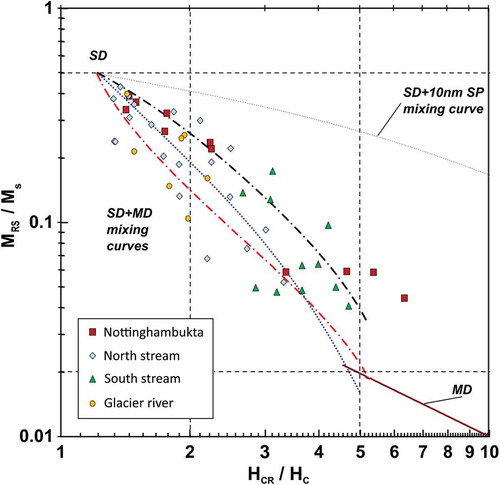
Figure 8. Plots of (a) χARM versus χLF (King et al. Citation1982) and (b) anhysteretic magnetic susceptibility versus saturation magnetization (Mrs).
